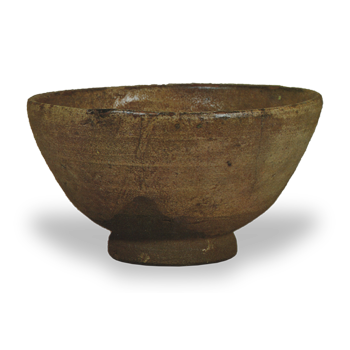


Accessories: Inner box, paulownia wood, white wood, inscription
Provenance: Kyoto Mitsui family—during the Kansei era, from Fushimiya Jin’emon to Matsudaira Fumai
Recorded in: Fushimiya Memoirs, Taisho Meiki Kan (Guide to Famous Ceramics of the Taisho Era)
Dimensions
Height: 8.0 cm, Mouth diameter: 14.0 cm, Foot diameter: 6.1 cm, Weight: 295 g
There are many names for Karatsu tea bowls. As shown in the illustrations, there are various names such as “Seto Karatsu,” “Choson Karatsu,” and “Okutakara.”
The name “Karatsu” is not fixed. It tends to be associated with Choson or Seto. If it has a Seto style, it is associated with Seto. If it has a Choson style, it is associated with Choson.
The appreciation of tea bowls by tea masters was focused on enjoyment, so this perspective is entirely different from today’s.
This tea bowl is labeled “Okutakara.” Since it cannot be clearly identified as either Korean or Karatsu, it was likely labeled “Okutakara.” What does the term ‘Okutakara’ signify?
This well-used tea bowl has a slightly blackened persimmon color, but its foot is exceptionally sturdy, giving it a sense of weight. The term “Okutakara” may have been used to emphasize this characteristic.



